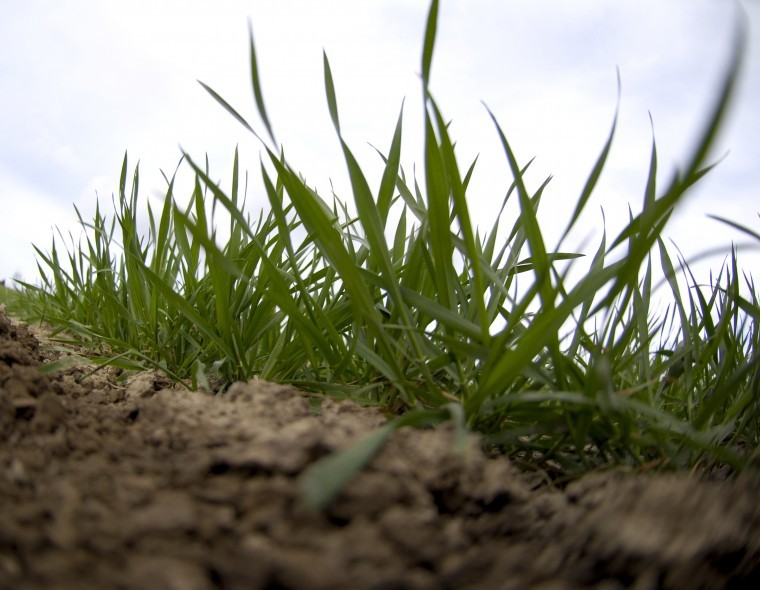Adopting a preventative approach to disease control and choosing optimum fungicide levels matched to risk factors such as variety and weather, rather than simply cutting back as a reaction to low grain prices, could be crucial for 2016 winter wheat margins, say agronomy experts.
The message comes just as NIAB-TAG technical director, Bill Clark, has developed a new computer model for 2016 looking at the effect of fungicide inputs on winter wheat.
Developed for the ARTIS training initiative, the model shows that, as fungicide input increases, so too does margin, before flattening off at the optimum, but then tailing off only gradually once the optimum is passed. Mr Clark interprets this as showing margin is at less risk if slightly more fungicide is applied than slightly less.
The model also indicates that, for both responsive and less responsive varieties, wheat price has relatively little impact on optimum fungicide level, Mr Clark notes.
“Disease-prone varieties do have a higher fungicide requirement than resistant varieties,” explains Mr Clark, “but the wheat price has little impact on the actual optimum.
“Wheat price has to fall a long way before you make radical changes to your programme. Even at £100 per tonne the optimum fungicide input only changes slightly.
“Many farmers think they can spend less money, but that is a risk because nobody can predict what the future disease risk is going to be. Margin loss from spending too little in a high disease year is three times the margin loss from spending too much in a low disease year,” he adds.
Syngenta field technical manager, Iain Hamilton, agrees with the unpredictable nature of future disease pressure, and says added difficulties curing Septoria tritici, due to reduced sensitivity to triazole fungicide chemistry, mean a preventative approach has become even more important to stop disease getting out of hand.
Around 30% of winter wheat varieties in the ground have resistance ratings of six or below to yellow rust, he adds. Yellow rust and Septoria have already been seen in crops this season – further underlining the argument for a preventative approach, he notes.
“Although the flag leaf is the key leaf to protect in winter wheat, because it contributes over 40% to yield, it is increasingly crucial that flag leaves are clean when T2 fungicides are applied to them,” says Mr Hamilton.
“Accordingly, effective T0 and T1 fungicides are especially important, not only for protecting lower leaves, but also for reducing over-wintered Septoria and rust inoculum, and then in restraining disease progression up to the flag leaf.
“Indeed, trials last season, with no other fungicides applied, showed a T0 application of the fungicide Cherokee provided benefits for the rest of the season – with the Cherokee plots yielding an extra 0.8 t/ha and retaining more green leaf area right through to the crop being in ear.
“Even where a full follow-up T1, T2 and T3 programme was used in separate ADAS trial work, yield was still 0.36 t/ha higher where T0 Cherokee was included.
“With early Septoria and yellow rust infections already seen in crops this season, the beauty of Cherokee is that it combines chlorothalonil against Septoria with a high loading of two different triazoles against rust problems. In trials we’ve seen visually improved disease control from Cherokee compared to a treatment containing only a single triazole with chlorothalonil, with up to 0.39 t/ha extra yield and £40/ha extra margin.”
At T1, Bill Clark and Iain Hamilton agree on the importance of keeping leaf three clean because, if left unprotected, it can act as a source of infection for leaf two and the flag leaf. Both also agree on including an SDHI fungicide at T1.
“When the tip of the flag leaf is emerging, it is below leaf three,” says Mr Clark, “so Septoria can transfer across.
“Looking at SDHIs versus triazoles, SDHIs generally give you higher yield even if there is similar disease control. I would advocate SDHI at T1 as well as T2,” he adds.
Iain Hamilton says trial work last year showed greater Septoria reduction from the SDHI + triazole fungicide Keystone than from triazole + Bravo or triazole alone.
“Keystone is an ideal T1 SDHI,” says Mr Hamilton, “because it offers persistent protection and has the reassurance of activity against rust and Septoria. It also has good compatibility with Bravo – which is important for a three-pronged attack against Septoria and for resistance management,” he adds.




